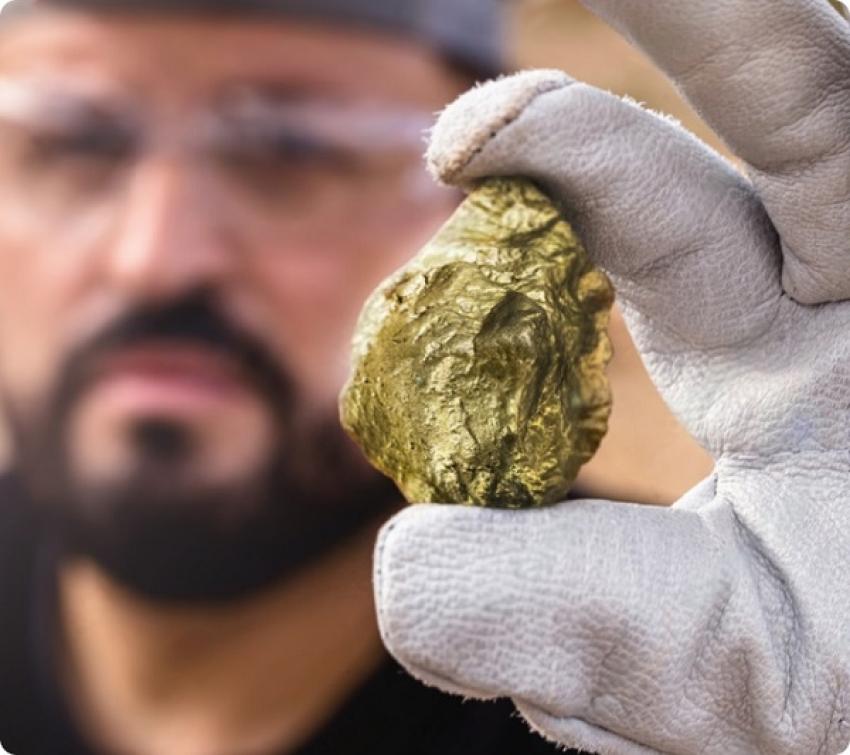
Gold mining is our heritage, for centuries, powering economies and creating jobs. Anyway, the gold mining process can be environmentally dangerous. Chemicals like cyanide and mercury are used for gold recovery. This can leach out into the grounds and waters nearby. Mining generates tremendous waste and often incinerates forests, displacing indigenous animals.
Mining communities end up with water pollution and other health dangers. Although green trends in the gold extraction process are sprouting to minimize ecological damage. With safer chemicals, recycled water and waste management, miners can produce gold without decimating ecosystems.
Common Environmental Concerns in the Gold Extraction Process
Chemical Pollution
Conventional gold mining processes employ poisonous substances. These chemicals can soak into surrounding rivers and the earth. This pollution infects the soil and the wildlife near the mines. This pollution can be reduced by managing chemicals and making safer choices
Waste Production
Mining creates enormous amounts of tailings and waste rocks. These materials can leach toxic chemicals. When garbage is correctly contained and processed it can prevent contamination.
Water Usage
Removing gold from ore can require collective use of water threatens nearby rivers, wetlands, and peripheral communities. By recycling process water within gold-recovery circuits, mills can substantially diminish draw downs of regional stream and aquifer recharge.
Energy Consumption
Heating, crushing and refining ore are highly energy-intensive acts. For example, roasting and electro refining gold release volatile particulate matter, increasing overall energy demand and resultant carbon dioxide forgings. Both energy-efficient equipment and cleaner, remainable energy sources are steps toward weaving lower climatic imprints.
Sustainable Alternatives in the Gold Extraction Process
Cyanide-Free Methods
Certain modern extraction techniques eschew toxic chemicals. Methods such as gravity separation or thiosulfate leaching minimize cyanide requirements. These techniques reduce the possibility of ground and water pollution.
Tailings Management
New strategies for tailings management include storing waste in lined facilities and recycling water from tailings. This approach reduces leakage and environmental damage.
Environmental Friendly Method
Equipment retrofits and green technologies help reduce energy use. It also cuts emissions. Solar or efficient machinery drives greener gold.
Reclamation and Rehabilitation
After mining, restoring land to its natural state or converting it to productive use is critical. Reclamation helps repair ecosystems and protects wildlife.
Community Engagement in Gold Extraction Process
Involving local communities is key to responsible gold mining. Engaging locals in the planning, giving them jobs, and backing social initiatives all counter tensions. This practice builds trust and ensures that mining benefits both the company and the surrounding communities, while promoting long-term environmental responsibility.
Aguila Uno Resources Approach
Aguila Uno Resources offers an initial first step protocol of Mineral Resource Exploration combined with a full-scale build-out of essential custom Gold Production Facilities. These facilities cover every stage from design to gold production process. The company specializes in constructing custom gold production facilities tailored to each client’s needs and the ore being processed. Their goal is to create economical and sustainable operations that maximize gold recovery and maintain long-term success.
They concentrate on sustainable mining by handling waste, tracking environmental impact and industry regulations. In their operations, they prioritize safety with rigorous standards to safeguard employees and nearby environments.
Conclusion
The way we extract gold from the earth can have a pronounced effect on the surrounding environment if we let it. Toxins, chemical residue, prodigious water and power consumption: all of these introduce risks to nearby habitats and the people who depend on them. Yet we do not have to settle for this legacy. Chemical-free refining, smarter use of water, and thoughtful, closed-loop waste treatment all curb damage.
Aguila Uno Resources shows it is feasible to combine steady gold output with a light ecological footprint, provided companies turn to careful engineering and up-to-date technologies for every project. Long-term viability requires a promise to measure impacts on land, rivers and communities, and to observe strict safety guidelines with every drilling, every load of ore processed. Adopting these measures is no longer a choice. It is the only way forward, if this irreplaceable metal is to be mined and supplied without borrowing from the future.



